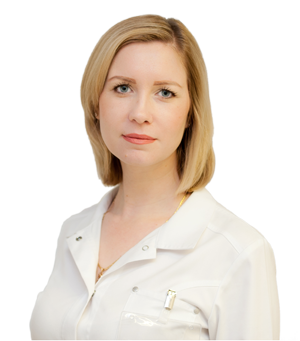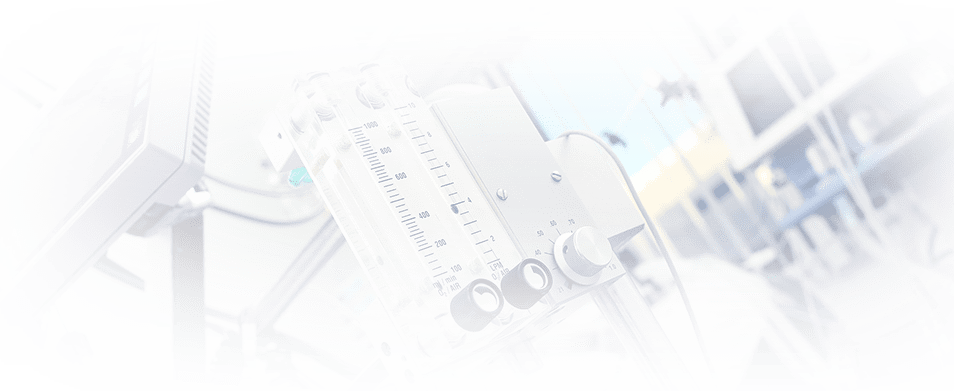Myoma of the uterus

District gynecologist, gynecologist-surgeon (SOD)
Luzina Irina
Experience 15 year
District gynecologist, gynecologist-surgeon (SOD)
Myoma of the uterus is a benign tumor of the uterus, a fairly common disease. The disease is diagnosed in 20% of thirty-year-old women. For a long time, myoma was considered to be a tumor of a benign nature, which can become malignant only under certain conditions. Until recently, the only treatment method for diagnosing fibroids was to remove the tumor together with the organ, that is, with the uterus. Today, experts consider fibroids as a reaction of the body to damage caused to the uterus. The disease factors are:
- endometriosis;
- gynecological operations;
- scraping;
- abortion;
- inflammatory processes;
- hormonal fluctuations.
Fibroids are formed from connective or muscle tissue. Its size can range from a couple of millimeters to 1-8 centimeters. The tumor can be localized on the cervix or on the body. Examination often reveals several nodes of different sizes.
Myoma occurs due to the active division of uterine cells, which is stimulated by estrogens. One of the features of this disease is that the detection of a normal balance of progesterone and estrogen levels as a result of a blood test is not a guarantee that fibroids are absent. In order to be sure in the absence of this disease, a serious examination is required using modern diagnostic methods. Diagnostics also allows you to identify the location of the formation: in the uterine cavity, in the abdominal cavity, in the wall of the uterus.
Fibroids are almost never diagnosed in girls under 25 and in women over 50. Women are at greatest risk after 25 and up to 50. The likelihood of developing fibroids during periods of general decrease in immunity, during inflammation of the genital area, during pregnancy is especially high. In recent years, the diagnosis of "uterine fibroids" is often given to girls 17-18 years old.
Symptoms of uterine fibroids
The fact that a woman is developing uterine fibroids, she may not even suspect, since external signs may not appear. It often happens that a gynecologist examines a patient for completely different reasons (for example, a professional examination) and during the examination reveals a neoplasm. Symptoms are active in cases where the uterus grows large, but if the tumor is small, symptoms may not be present.
Uterine fibroids are similar in symptoms to many diseases of the reproductive organs. Among the most common symptoms that can be used to determine the formation and development of fibroids are:
- the appearance in the middle of the cycle of discharge with blood;
- long duration and irregularity of menstruation;
- uterine bleeding, and quite abundant;
- in the presence of a large tumor, urination becomes more frequent, the regularity of the stool is disturbed due to the pressure of a large tumor on the organs;
- there is a feeling of constriction of the pelvic organs;
- pulling pains appear in the lower abdomen;
- the volume of the abdomen increases, which is associated with obesity.
- If the fibroid is not detected in a timely manner, there is no necessary treatment, the disease can cause the following consequences:
- anemia develops due to profuse bleeding;
- proliferation of the tumor node leads to compression of the organs, after which constipation and frequent urination occur;
- it is very difficult for a woman to get pregnant and give birth to a child.
Timely referral to a specialist allows you to identify the problem at an early stage, thus avoiding the need for surgical intervention.
Causes of fibroids
The main reason is hormonal disruptions due to an increase in the concentration of estrogen. During menopause, the concentration of estrogen decreases, and fibroids can go away on their own without any treatment. But experts do not recommend counting on such a result, advising women to see a doctor as soon as possible when the first symptoms appear.
A number of factors can provoke the appearance of the disease:
- metabolism is impaired;
- a woman has a hereditary predisposition;
- the menstrual cycle is unstable;
- the woman had abortions many times;
- constant nervous tension (the relationship between stress and uterine myoma, scientists have identified relatively recently);
- obesity, too much body weight;
- used intrauterine contraceptives;
- a woman does not get satisfaction from her sex life (anorgasmia);
- a woman leads an inactive lifestyle, which results in insufficient blood circulation in the pelvic organs.
Some factors that cause the appearance of myotic neoplasms deserve closer attention.
The risk group includes women under 35 years of age who have been diagnosed with hypertension or have problems with obesity (metabolism). Also, the cause can be inflammation, which took the form of chronic, trauma and the use of oral contraceptives.
The likelihood of developing the disease depends to a large extent on how much and how often the woman gave birth, the duration and availability of breastfeeding, how many full-term and how many aborted pregnancies were. A woman who has given birth at least once is less likely to develop fibroids than a woman who has not given birth.
Improper diet or unbalanced diet. Insufficient fiber in food, high percentage of fatty acids and excess calories in food significantly increase the chances of developing a neoplasm. If the body's fat percentage is much higher than the norm, the hormonal balance can shift and the number of estrogens increases, which, in turn, increases the risk of tumor formation.
Lack of orgasm during intercourse is also one of the causes of the tumor. Arousal during intercourse causes increased blood flow. If a woman does not get an orgasm, the blood stagnates with excessive vascular overstrain.
Diagnosis of uterine fibroids
The easiest and most reliable way to detect fibroids in a timely manner is to visit a gynecologist every year. The presence of developing fibroids can be established during a vaginal gynecological examination - the uterus is defined as tuberous, dense, enlarged. If a disease is detected, a diagnostic curettage can be performed to confirm the diagnosis, after which the scraping is examined by histological methods. Tumor diagnosis is also possible using the following methods:
- Ultrasound. An ultrasound examination is performed to confirm the findings of a gynecological examination. The equipment reveals the location, size and number of nodes;
- laparoscopy, during which the uterus is examined with a special instrument through small punctures previously made in the abdominal wall;
- hysteroscopy, during which the examination is performed with an optical device inserted into the uterus through the vagina and cervix;
- depending on the characteristics of a particular case, it may also be necessary to conduct a culdoscopy, colposcopy, cervicoscopy;
- if the tumor is quite large, grows rapidly and there is every chance of turning it into a malignant one, the gynecologist can give a referral for an MRI of the pelvis, which involves the administration of a contrast agent. MRI allows you to obtain reliable information not only about the tumor itself, but also about its relationship with neighboring organs;
- if, according to the indications and the patient, the operation is the best option, before carrying out, the specialist may prescribe an internal urography, the conduct of which allows you to find out data on the state of the urinary tract.
In some cases, a specialist, in the presence of some symptoms, but in the absence of fibroid nodes, recommends that the patient undergo an ultrasound scan after 6 months.
Which doctor treats uterine fibroids
When certain symptoms appear that indicate the presence of a neoplasm (pulling pains in the lower abdomen, unstable menstruation, prolonged bleeding, etc.), women think about which specialist they should contact. Fibroids are treated by gynecologists and gynecologists-surgeons. Gynecologists conduct an initial examination, give appointments for diagnostics and, based on the results of diagnostics, determine the method (method) most effective for restoring a woman's health. If, according to the test results, an operation is indicated, it is performed by gynecologists-surgeons.
The clinic of JSC "Medicine" in Moscow provides services for the diagnosis and treatment of uterine fibroids. The patients are provided with highly qualified specialists who possess the most modern methods of treatment and effectively use traditional methods. The clinic is equipped with modern diagnostic and therapeutic equipment, which allows the specialists of the medical institution to successfully cure the most difficult cases.
In order to make sure of the high qualifications of specialists in the field of gynecology working in the clinic of JSC "Medicine", it is enough to visit the section "Our doctors" on the official website of the clinic.
Treatment methods of uterine fibroids
When choosing a method, the gynecologist takes into account many factors, the main of which are:
the age of the patient (if the patient is out of childbearing age, a specialist may recommend medication);
- the size of the neoplasms;
- localization of neoplasms;
- the severity of clinical manifestations.
Patients diagnosed with uterine fibroids must be monitored by a gynecologist, in most cases the frequency of visits is once every three months.
Depending on the condition of the tumor and other factors, the gynecologist chooses one of two methods of treatment:
- conservative (therapeutic);
- surgical.
Treatment of fibroids without surgery
Conservative or therapeutic treatment can be prescribed by a specialist if:
- myoma grows slowly;
- severe symptoms are absent;
- the size of the fibroid does not exceed 12 weeks;
- the woman's age is approaching the onset of menopause.
Conservative treatment of the disease involves the use of drugs. In the list of basic measures, the implementation of which allows you to eliminate fibroids without surgery, actions aimed at achieving the following goals:
Normalization of metabolism by correcting the patient's diet.
Normalization of the menstrual cycle in order to eliminate the likelihood of prolonged bleeding.
Prevention of symptoms of anemia.
Restoration of immunity in order to increase the protective properties of the body.
Restoration of genital microflora and treatment of diagnosed diseases.
Conservative treatment is used in cases where small fibroids are diagnosed in the absence of pronounced symptoms. The most common treatment is hormonal medication. These drugs are derivatives of progesterone and act as follows: they simultaneously normalize ovarian function and prevent the further development of neoplasms. The drugs are given by injection once a month for 6 months. Taking drugs can reduce the size of the uterus by 55% or more.
This technique is used in most cases when diagnosing fibroids in older women, since osteoporosis is likely to develop in young women. The disadvantage of this technique is that conservative methods can only slow down the development of the disease, but not eliminate it completely. When treating older women in this way, it is highly likely that with the onset of menopause, myoma will resolve on its own.
Ultrasonic method
The FUS-ablation technique is one of the progressive methods of treatment. The basis of the technique is the coagulation of myoma nodes by directed pulses of focused ultrasound. The process is monitored using MRI. This procedure has many advantages over the removal of fibroids by surgery, but it is effective only if certain characteristics are present, therefore, the decision to use FUS ablation is made exclusively on an individual basis after a thorough examination.
The use of the FUS ablation method has many advantages:
- the method eliminates bleeding and causing traumatic effects on tissues;
- the uterus maintains its integrity, therefore, reproductive function is preserved;
- the likelihood of side effects is minimal;
- rehabilitation periods are short (in most cases, hospitalization is not required);
- the probability of relapse is minimal.
Surgery for uterine fibroids
Operations in the diagnosis of uterine fibroids are possible in cases where all other treatments are ineffective. The safest option for operable treatment is laparoscopy, which is gentle on the body and allows you to fully preserve reproductive function. Among the advantages of this technique:
- the integrity of the uterus is preserved, therefore, a woman can conceive and bear a child;
- the recovery period of the body is rather short.
Uterine artery embolization (UAE) method
EMA began to be used relatively recently. The technique consists in the fact that the nutrition of the myomatous node stops, since the blood flow through the arteries stops. After the surgeon discovers the vessel, a drug is injected into it to stop the blood flow. After the cessation of blood supply, the nodes of the fibroid completely disappear or significantly decrease in size. One of the advantages of the operation is the complete disappearance of symptoms. In addition, there is no risk of recurrence after the operation.
Fibroid surgery
Surgery is indicated if:
- myomatous nodes are large (larger than a 12-week pregnancy);
- myoma rapidly increases in size;
- myoma in combination with endometriosis or ovarian tumor causes severe pain syndrome;
- there is a suspicion of a malignant transformation.
Depending on the results of the examination, the age of the patient and other factors, the gynecologist may prescribe:
- radical surgery (the uterus is removed completely);
- conservative (the uterus is preserved).
Conservative surgical treatment is prescribed for young nulliparous women.
Myomectomy, which is a procedure aimed at exfoliation of myosis nodes, allows you to preserve reproductive function:
- the least traumatic method of carrying out myomectomy is hysteroscopy, performed under local anesthesia and involving the use of a laser for excision of fibroids under the supervision of a physician;
- myometrectomy, during which the overgrown myomatous nodes in the wall of the uterus are excised, but healthy organ tissue is preserved.
If the patient does not intend to give birth, and the examination results indicate complete removal of the organ, gynecologists use one of the methods of radical surgery:
- hysterectomy (the uterus is removed completely);
- supravaginal amputation (the body of the uterus is removed without the cervix);
- amputation supravaginal, while to the swarm excised cervical mucous
Indications for surgical treatment of uterine fibroids
Surgery is the only cure for the following factors:
- uterine bleeding is frequent and profuse;
- myoma rapidly increases in size;
- there are a lot of myoma nodes, the age of formation is more than 12 weeks, the pelvic organs are compressed;
- a submucous node has formed;
- the leg of the subserous node is twisted;
- submucosal myoma;
- diagnosed with necrosis of the myoma node;
- myoma is combined with adenomyosis.
The method of myectomy is determined by the surgeon depending on the localization of the neoplasm, the severity of the disease, the type of fibroids, and the individual characteristics of the patient.
Contraindications in the diagnosis of uterine fibroids
There are several contraindications, in particular, a categorical ban on visiting saunas, baths, the beach - that is, any place where overheating is likely.
When choosing a method of treatment, the following methods are contraindicated:
- laparoscopy is contraindicated: if there are 3 or more nodes, the diameter of which is more than 5 cm; if the knot diameter is more than 15 cm; if the size of the uterus corresponds to 16 weeks of pregnancy; if there are diseases in which it is dangerous to increase the pressure in the abdominal cavity;
- hysteroscopy is contraindicated: if the upper and lower genitals are infected; if there are diseases of the liver, kidneys, heart in severe form; if the uterus is more than 12 cm deep; if the tests indicate the malignancy of the tumor;
- ablation is contraindicated: if tumors are present; if the inflammatory process has turned into an acute form; if diseases of the kidneys, liver, heart are diagnosed; if an intrauterine device was installed; if metal implants are installed; if there are rough large scars on the body of the uterus.
Cost of examination, diagnosis and treatment of uterine fibroids
The clinic of Medicina JSC offers services of primary examination, diagnostics and treatment at prices, which can be found in the table below or in the corresponding section of the clinic's website.
The total cost of treatment is determined after the initial examination and the selection of the most effective course of treatment. Specialists of JSC "Medicine" (the clinic of Academician Roitberg) in Moscow use the most effective methods, modern high-precision diagnostic equipment, safe materials and effective drugs.
Attention! You can cure this disease free of charge and get medical care at Medicina JSC (Academician Roitberg's clinic) under the program of the State Guarantees of Compulsory Medical Insurance (Compulsory Medical Insurance) and VMP (high-tech medical care). For more details, please call +7 (495) 995-00-33.
Advantages of fibroid treatment in the clinic of JSC "Medicine"
JSC "Medicine" (Academician Roitberg's clinic) in Moscow offers the services of highly qualified specialists with extensive experience in the treatment of uterine fibroids and having modern equipment. Significant factors in favor of choosing the clinic of Medicina JSC for the treatment of uterine fibroids are:
- the opportunity to use the help of experienced gynecologists who are members of international medical associations;
- the opportunity to receive complex treatment due to the presence in the clinic of specialists of various medical fields;
- the presence of comfortable wards, equipped according to international standards;
- the use of extremely safe methods of diagnosis and treatment;
- impeccably correct choice of the course of treatment, taking into account the wishes of the patients;
- attentive polite staff;
- personal curator for each patient;
- providing patients with complete information, including access to medical history;
- clear organization of consultations and procedures;
- complete safety of patient data;
- immediate administration response to patient complaints.
By contacting the clinic of JSC "Medicine" in Moscow, you are guaranteed to receive highly professional medical care and first-class service.




